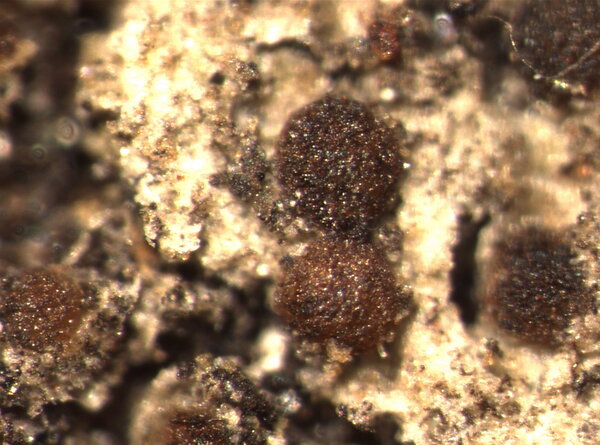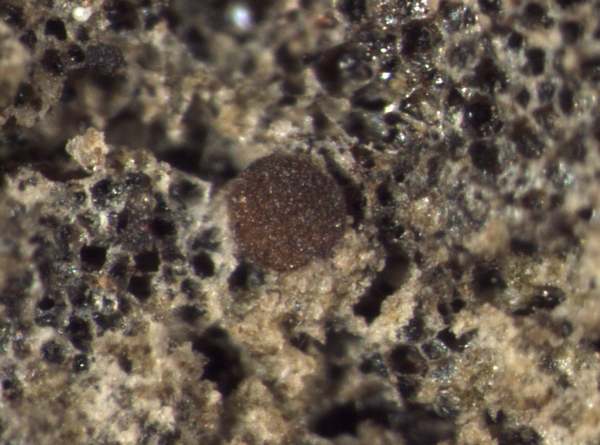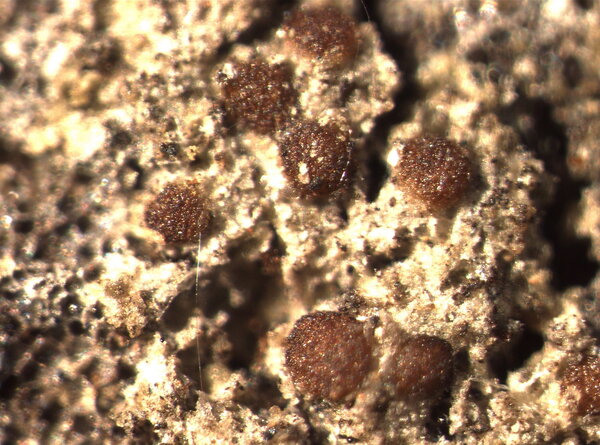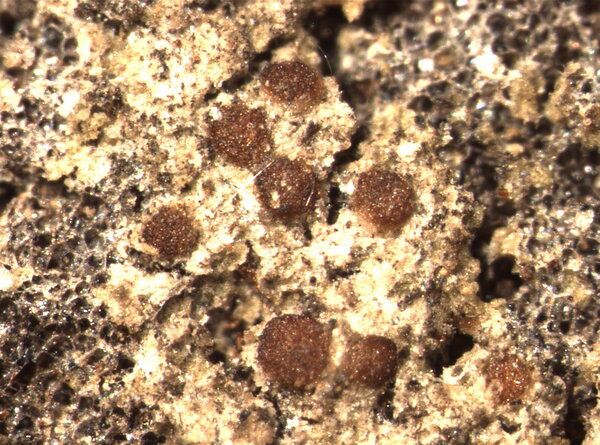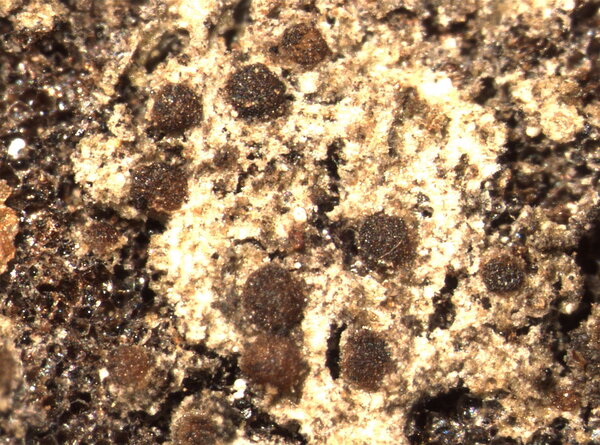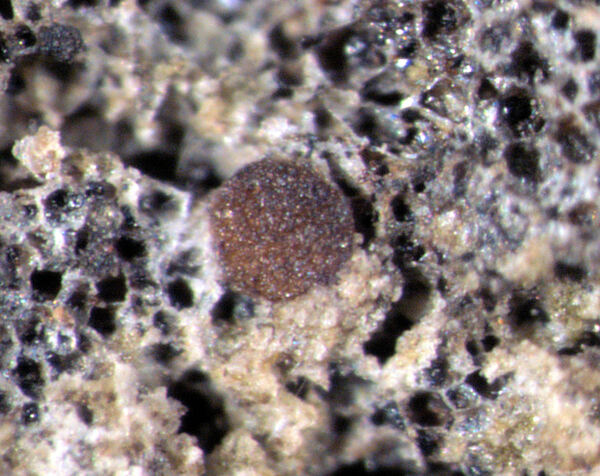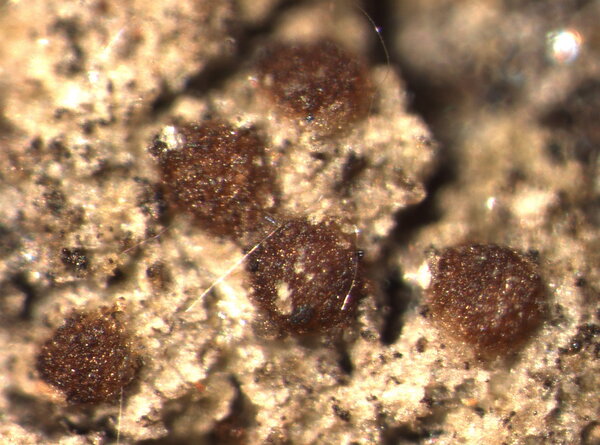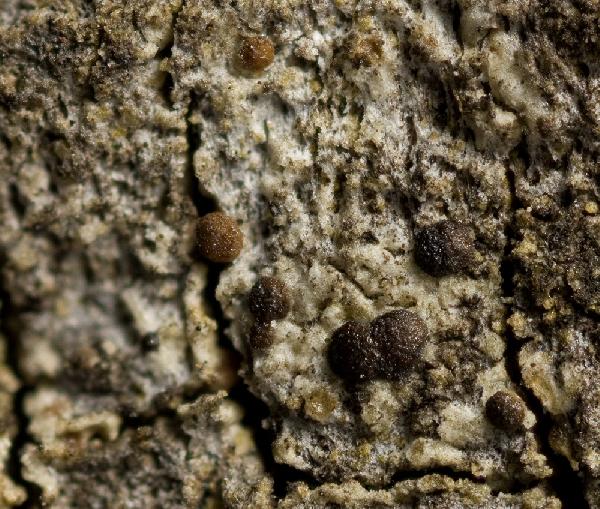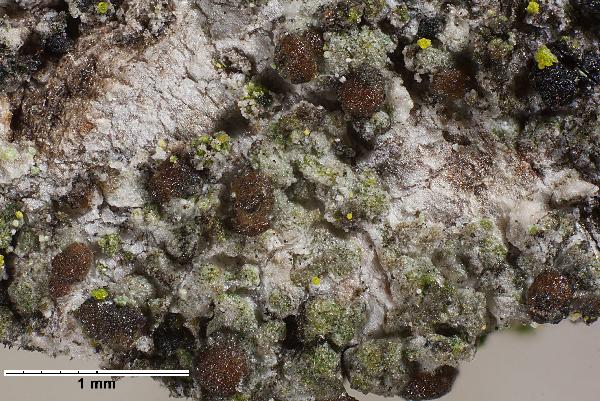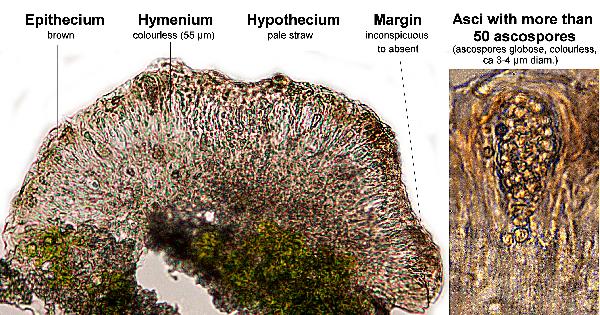Strangospora pinicola (A. Massal.) Körb.
Parerga Lichenol.: 173, 1860. Basionym: Sarcogyne pinicola A. Massal. - Lotos, 6: 78, 1856.
Synonyms: Biatorella pinicola (A. Massal.) Anzi
Distribution: N - Frl, Lomb. C - Tosc (Putortì & al. 1999c, Loppi & al. 2004, Loppi & Baragatti 2011), Umb (Ravera 1999, Ravera & al. 2006). S - Camp (Nimis & Tretiach 2004), Si (Campisi & al. 2020).
Description: Thallus crustose, thin and evanescent to rather thick, granular-warted, pale grey to grey-brown. Apothecia biatorine, 0.2-0.5 mm across, often arranged in small clusters of 2-4, with a dark red-brown, strongly convex disc, and a thin to almost absent proper margin. Proper exciple poorly developed, brownish in outer part, colourless within, K-; epithecium yellow-brown to brown, K+ red brown, N+ orange-brown; hymenium colourless, 55-65 µm high; paraphyses strongly coherent, branched and anastomosing, 1.5-2 µm thick; hypothecium colourless to pale yellow, 50-110 µm high. Asci c. 100-spored, broadly clavate, thickened in upper part, without a gelatinous outer layer, the wall and well-developed apical dome strongly K/I+ blue. Ascospores 1-celled, hyaline globose, (1.5-)2-2.5 µm wide. Pycnidia rare, globose, colourless to pale brown. Conidia 3-4 x c. 1 µm. Photobiont chlorococcoid, with ellipsoid cells. Spot tests: K-, C-, KC-, P-, UV-. Chemistry: without lichen substances.Note: on hard lignum (e.g. on poles) and on acid bark, especially of conifers; perhaps more widespread in the Alps. It is included in the Italian red list of epiphytic lichens as “Vulnerable” (Nascimbene & al. 2013c).
Growth form: Crustose
Substrata: bark and lignum
Photobiont: green algae other than Trentepohlia
Reproductive strategy: mainly sexual
Commonnes-rarity: (info)
Alpine belt: absent
Subalpine belt: extremely rare
Oromediterranean belt: absent
Montane belt: very rare
Submediterranean belt: absent
Padanian area: absent
Humid submediterranean belt: very rare
Humid mediterranean belt: absent
Dry mediterranean belt: absent
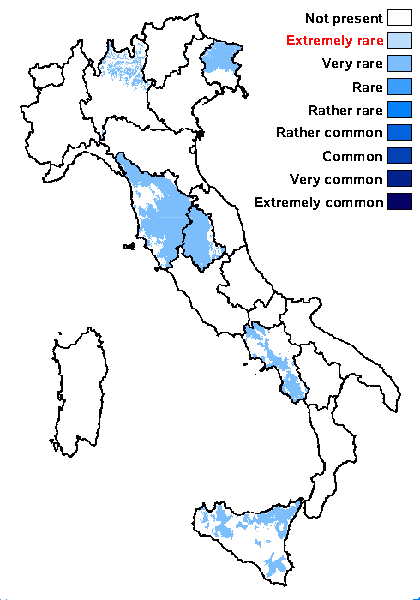
Predictive model
Herbarium samples
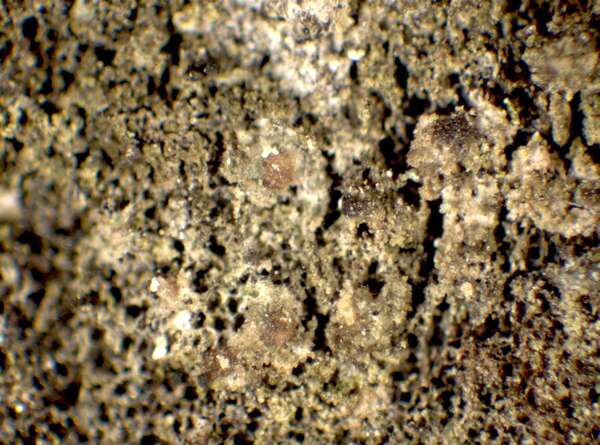

P.L. Nimis; Owner: Department of Life Sciences, University of Trieste
Herbarium: TSB (34301)
2001/12/08
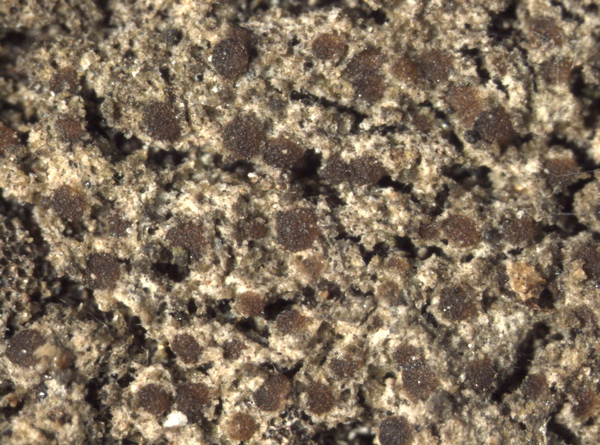

E. Pittao; Owner: Department of Life Sciences, University of Trieste
Herbarium: TSB (TSB 32617)
20.10.2009
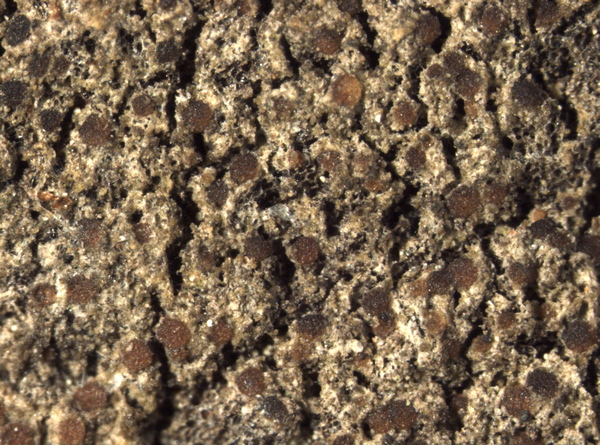

E. Pittao; Owner: Department of Life Sciences, University of Trieste
Herbarium: TSB (TSB 32617)
20.10.2009
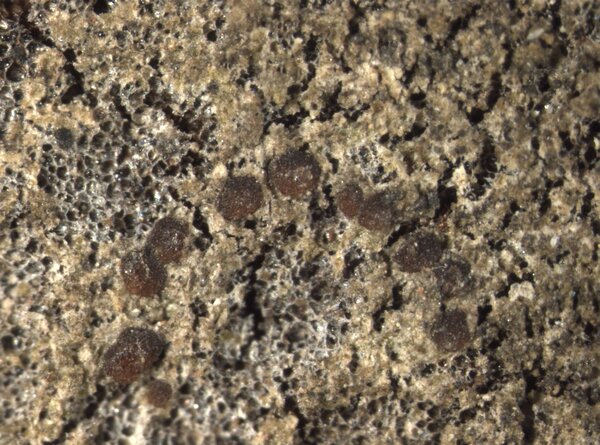

E. Pittao; Owner: Department of Life Sciences, University of Trieste
Herbarium: TSB (TSB 32617)
20.10.2009

Magnusson A. H. (1935) Acarosporaceae, Thelocarpaceae. - In: Rabenhorst G. L.: Kryptogamen-Flora von Deutschland, Österreich, und der Schweiz-. 2nd- IX. Die Flechten. Abt. 5- 1. Gebr. Borntraeger. Leipzig, pp. 1-318. – Public Domain
Growth form: Crustose
Substrata: bark and lignum
Photobiont: green algae other than Trentepohlia
Reproductive strategy: mainly sexual
Commonnes-rarity: (info)
Alpine belt: absent
Subalpine belt: extremely rare
Oromediterranean belt: absent
Montane belt: very rare
Submediterranean belt: absent
Padanian area: absent
Humid submediterranean belt: very rare
Humid mediterranean belt: absent
Dry mediterranean belt: absent

Predictive model
| Herbarium samples |


P.L. Nimis; Owner: Department of Life Sciences, University of Trieste
Herbarium: TSB (34301)
2001/12/08


E. Pittao; Owner: Department of Life Sciences, University of Trieste
Herbarium: TSB (TSB 32617)
20.10.2009


E. Pittao; Owner: Department of Life Sciences, University of Trieste
Herbarium: TSB (TSB 32617)
20.10.2009


E. Pittao; Owner: Department of Life Sciences, University of Trieste
Herbarium: TSB (TSB 32617)
20.10.2009

 Index Fungorum
Index Fungorum
 GBIF
GBIF
